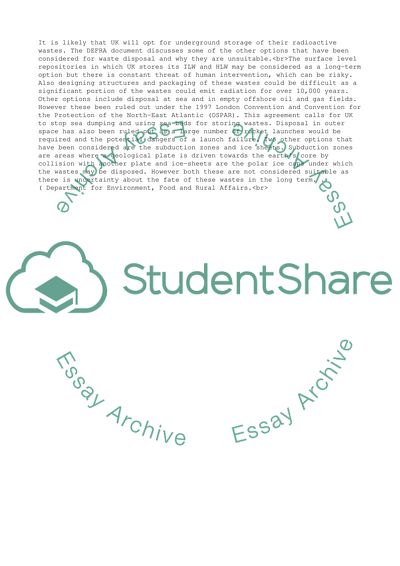Cite this document
(“Radioactive Waste Disposal Essay Example | Topics and Well Written Essays - 2000 words - 1”, n.d.)
Radioactive Waste Disposal Essay Example | Topics and Well Written Essays - 2000 words - 1. Retrieved from https://studentshare.org/management/1535321-radioactive-waste-disposal
Radioactive Waste Disposal Essay Example | Topics and Well Written Essays - 2000 words - 1. Retrieved from https://studentshare.org/management/1535321-radioactive-waste-disposal
(Radioactive Waste Disposal Essay Example | Topics and Well Written Essays - 2000 Words - 1)
Radioactive Waste Disposal Essay Example | Topics and Well Written Essays - 2000 Words - 1. https://studentshare.org/management/1535321-radioactive-waste-disposal.
Radioactive Waste Disposal Essay Example | Topics and Well Written Essays - 2000 Words - 1. https://studentshare.org/management/1535321-radioactive-waste-disposal.
“Radioactive Waste Disposal Essay Example | Topics and Well Written Essays - 2000 Words - 1”, n.d. https://studentshare.org/management/1535321-radioactive-waste-disposal.


